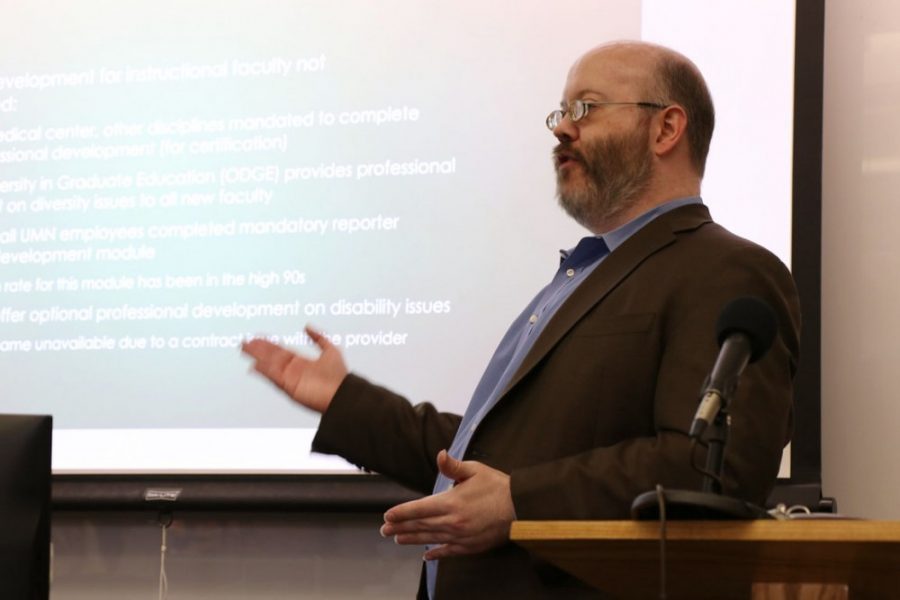The University of Minnesota’s Organization for Graduate and Professional Students with Disabilities is trying to extend its reach and collaborate with peer universities.
This academic year, OGPSD has undertaken efforts to connect with similar organizations in other Big Ten schools, including the University of Wisconsin-Madison and the University of Iowa. They hope to bring these organizations together to form something larger and more capable of creating change for students with disabilities.
“There is … not a body that exists within the Big Ten or anywhere in the country that is building a coalition amongst student organizations at different universities, serving specifically post-baccalaureate students with disabilities or chronic illnesses,” said Ryan Machtmes, president of OGPSD.
The effort is still in its early stages, and the group is hoping to reach out to at least four other universities by the end of the academic year, said Daniel Greenberg, vice president of OGSPD.
OGPSD has a history of allying themselves with other organizations. However, usually these efforts have been collaborations with other on-campus groups, like the Disability Student Cultural Center and others aiming to support disability advocacy.
“The needs of students with disabilities are not necessarily endemic to only one university campus,” Machtmes said, pointing out that a larger organized group could help handle larger problems dealt with by those with disabilities.
Having established communication with the University of Wisconsin-Madison, the group’s ambitions include setting up regular conferences, sharing goals with each other and establishing frequent communication to assist with advocacy.
“Change really starts to happen when a larger group of people … join the conversation and start pushing for acknowledgment and then eventually for change,” said Emily Young, a doctoral student and co-director of research within the OGSPD group at the University of Wisconsin-Madison.
Both groups said graduate students can feel overlooked because of the difference between their needs and those of undergraduate students. This emphasizes the need for graduate-based organizations and groups to ensure that these types of students receive the care and advocacy they need.
“One of the first places that we go to look for ideas or to find out where we stand is that our peer institutions,” Young said, pointing to how simply sharing ideas back and forth and keeping other groups updated on goals and accomplishments can help each group involved.







